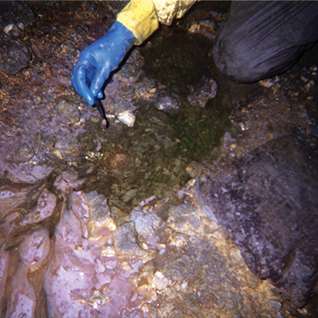New technique shows protein changes in intact microbial communities

By looking at how microbial proteins are modified over time, scientists can begin to understand changes in the broader community. The protein changes, or post-translational modifications (PTMs), occur in response to a sensed environmental cue. These alterations create rippling signal cascades, often leading to pervasive changes in the organism's growth and behavior. Although scientists have studied this regulatory mechanism extensively in individual organisms, its role at the scale of a complex community remains poorly understood. Now, thanks to a new technique developed by a collaborative team of researchers in California and Tennessee, scientists can analyze proteins collected from an intact microbial community, gaining insights into how the broader system works.
A new technique resulting from this study allows PTM analysis in proteins collected from an intact microbial community. This type of analysis allows scientists to link PTMs to larger, community-scale attributes that can be readily identified. They can translate these attributes into broader changes in biological processes in different environments.
In a study of PTM-based regulation, a collaborative team of researchers at the University of California, Berkeley, and Oak Ridge National Laboratory developed a new technique that allows PTM analysis in proteins collected from an intact microbial community (that is, the metaproteome) using high-resolution mass spectrometry coupled to high-performance computing. The investigators examined PTM in a model biofilm community found in a highly acidic environment and linked this regulatory mechanism to several community-scale attributes or phenotypes that could not be explained by observed changes in gene expression. Community-level attributes associated with PTM in this study included alternations in community structure, nutrient acquisition strategies, and resistance to viral invasion. This represents a considerable advance in the application of systems biology approaches to community-level analysis. The team is now working to scale up this technique to enable investigation of more complex communities and environments.
More information: Zhou Li et al. Diverse and divergent protein post-translational modifications in two growth stages of a natural microbial community, Nature Communications (2014). DOI: 10.1038/ncomms5405
Journal information: Nature Communications
Provided by US Department of Energy
















